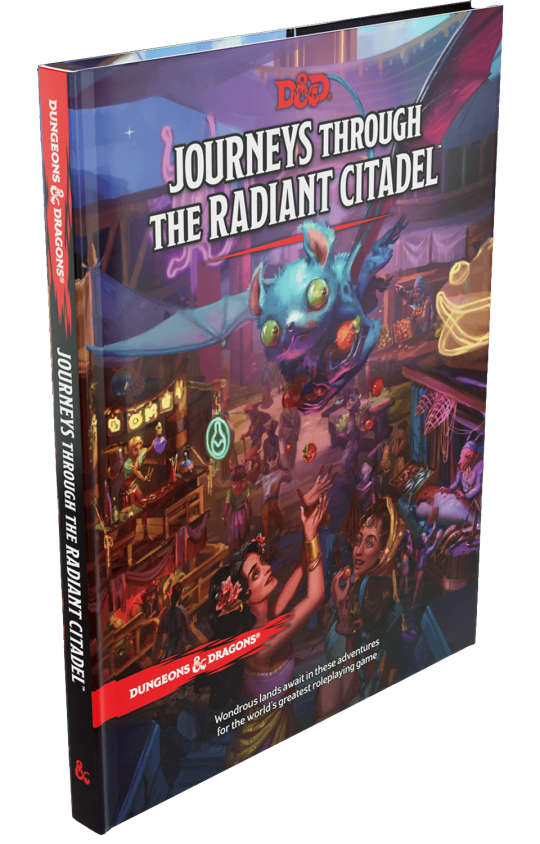
JRL writes:
Are lulls in the game — people pulling up phones, dozing off — acceptable in sessions? Or should it be avoided at all costs?
In diagnosing this, I think you have to distinguish between two groups:
- People who are in the current scene.
- People who are NOT in the current scene.
One of the best things you can have is a group that’s an enthusiastic audience: Even if they’re not the current focus of attention, these players will be completely engaged because they’re entertained and interested in what’s happening within the totality of the campaign. But even in these groups, there’ll be times when people not in the current scene will be tuning out. And that’s probably fine, as long as their activities aren’t distracting or detracting from the current spotlight.
(It’s one thing if they’re checking their e-mail. It’s another if they’re playing videos or pulling other players into chit-chat about a TV series they’ve been watching.)
If the players with characters in the current scene are completely disconnecting from the session, though, that’s a flashing red light that something is wrong.
(Before we go any further, though: Make sure that “check your phone” is actually tuning out. I’m frequently “on my phone” during our Grendleroot campaign, but it’s because I’m looking up my artificer’s spells.)
If spotlight players are tuning out, there are a few things to consider.
Take a break. In a four-hour session you should be taking at least one break. I recommend two or three. Breaks give everyone a chance to recharge and refocus.
Double check. Is the current scene actually interesting? Or are you grinding through empty time that you should be framing past?
Mechanically prompt the group. Calling for a group Perception check or Insight check or whatever your local gaming system’s equivalent is can be a good way to low-key refocus people.
Prompt the tuned-out player. If it’s a social scene, have the NPC turn to their PC and say something like, “What do you think, Tameric?” You can also just specifically ask the player, “What’s Tameric doing?”
If this tune-out is happening during combat, the root cause is probably that it’s taking too long for the combat round to loop back to the player. Solutions for this include:
Off-turn interactions. Some game systems will be designed to give the PCs the ability to take reactions when it’s not their turn. On the one hand this can increase how long it takes a combat round to resolve, but on the other hand it tends to keep players more engaged with what’s happening because they’ll be looking for opportunities to use their off-turn abilities.
Even in the absence of such mechanics, however, you can often proactively engage a player off-turn. Just targeting them with an attack is often enough to get their attention, but something that requires them to actually roll dice (e.g., a saving throw in D&D) or make a decision is even better.
Speeding up combat. Literally just resolving a combat round faster will also help, getting players back to their turns sooner so they have left time to tune out. There are a variety of techniques you can use here, including pre-rolling dice, rolling fistfuls of dice, and putting players on deck. (Putting players on deck is also great because it pre-engages the player with their turn before you actually get all the way back to their turn.)
Most these techniques, as noted, are about making sure that players in the current scene aren’t checking out. But when the party splits up, you don’t necessarily want to leave players unengaged for too long. There are a couple techniques that can help with this, too:
Cut mid-scene. Don’t wait for Group 1 to wrap up everything they’re doing before switching to Group 2. Instead, cut back and forth between the groups in the middle of scenes. This is described in more detail as one of the advanced techniques in The Art of Pacing, and it’s highly effective.
Cast an NPC. Consider the NPCs or monsters in the scene the player isn’t participating in. Then give one of them to the player to play. In combat you can generally just hand them the bad guy’s stat block. In a social scene, you’ll generally want to stick with simpler support roles (that don’t require a lengthy briefing), but more complex roles are possible if you’ve prepped them using something like the universal NPC roleplaying template. (Either way, I would generally suggest avoiding any NPC whose correct portrayal would rely on the player getting access to spoilers.)
IT’S NOT ME, IT’S YOU
With all of that being said, remaining engaged with the session is a two-way street. If you have a player for whom this is a habitual problem — it’s this one specific player who is constantly tuning out — then you need to talk with them about it outside of the game session.
If their tune-out isn’t disrupting the game, then you can just touch base and see how they’re doing. Are they actually disinterested in the campaign? Is there something different you could be doing to make the game better for them? In doing so, you may discover that there’s not actually a problem at all. Some players, particularly those with ADHD, will use structured “distractions” to remain mentally engaged with an activity.
If, however, the player is being disruptive — and having no idea what’s going on because they weren’t paying attention counts as disruptive! — then you need to have a frank discussion with them and figure out a solution. That might even include agreeing that this just isn’t the right game for them (although obviously that would not be the first go-to).
Either way, getting on the same page with your players will make things better for everyone in the long run.
On that note, I will say that you may tempted to implement a table rule like “no using cellphones.” That may work, but in my experience you’re far more likely to be treating the symptom than the disease.


















